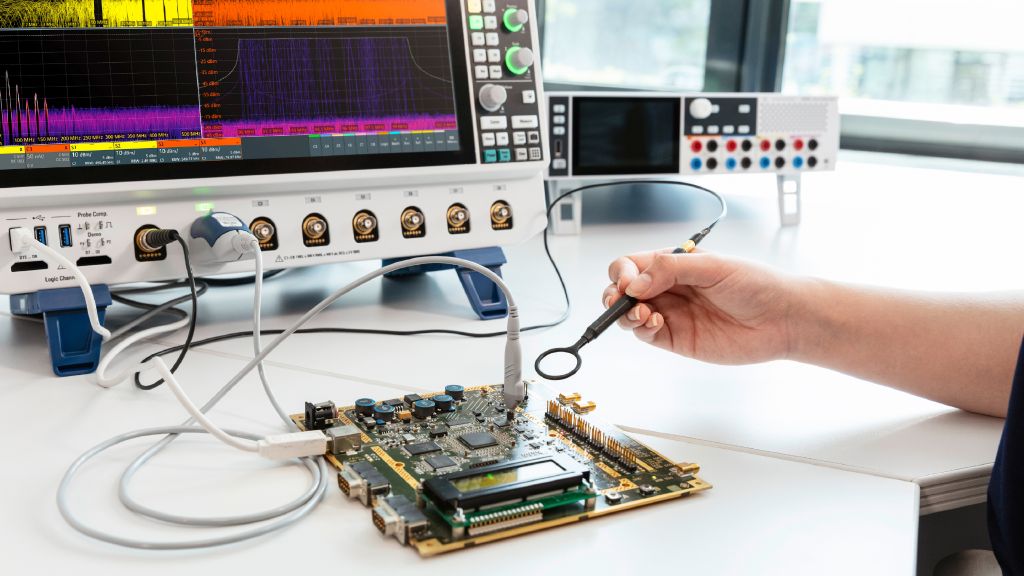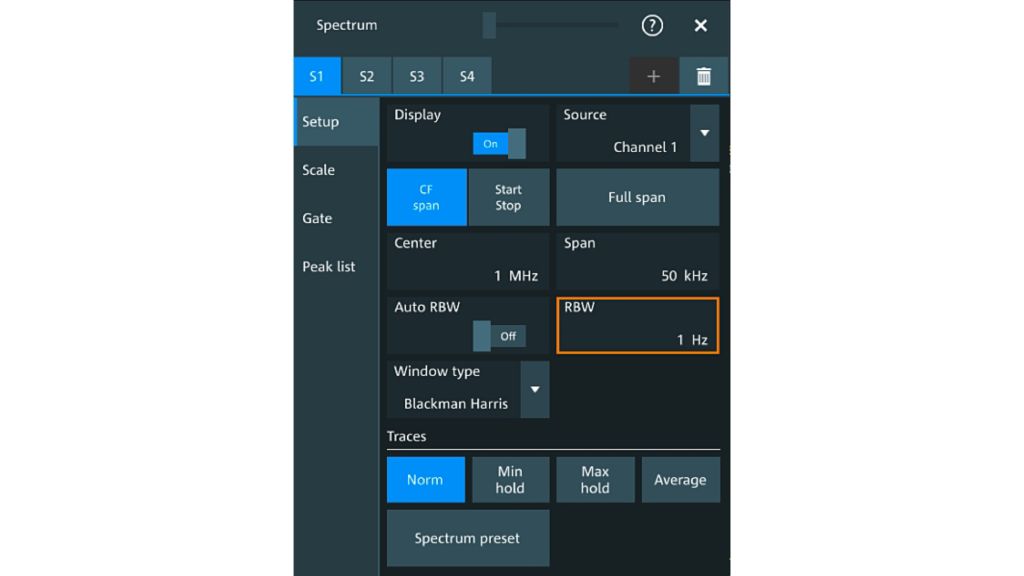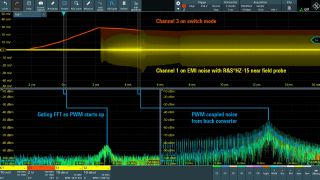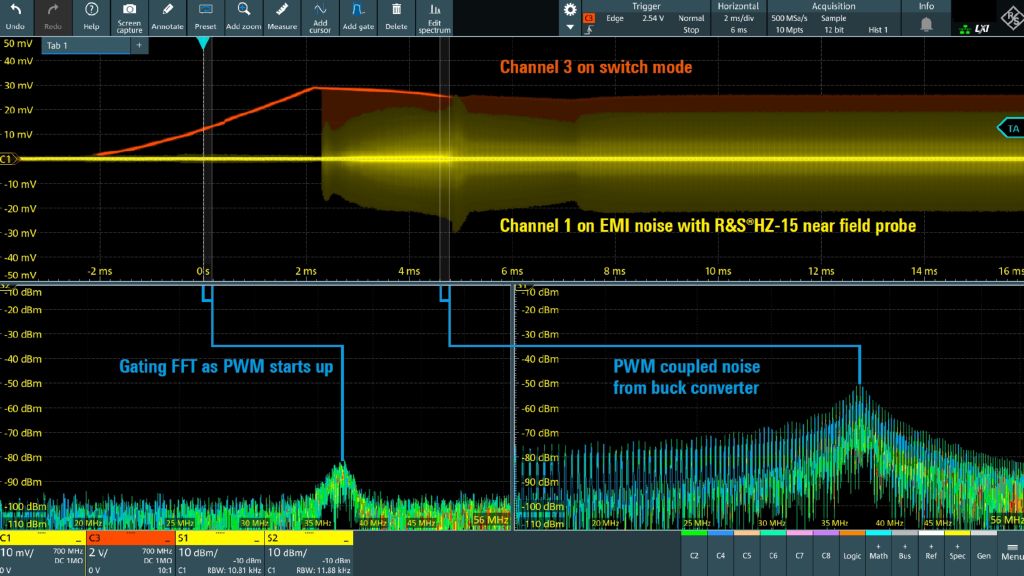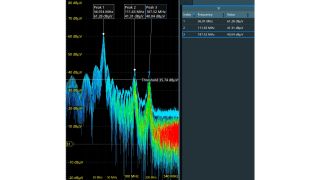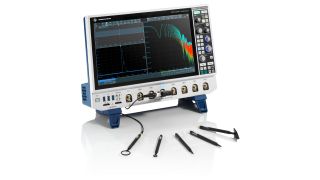Outstanding RF performance: high dynamic range and sensitivity
For EMI debugging, the MXO oscilloscopes have a high dynamic range and input sensitivity of 500 μV/div at full measurement bandwidth, allowing even weak emissions to be detected. The 12-bit ADC and 18-bit HD mode enhance the vertical precision. The hardware-accelerated FFT makes analysis in the frequency domain fast and responsive thanks to the high acquisition rate and functions such as color coding of the spectral display depending on the frequency of occurrence.
Additional feature for EMI debugging
- Ultrafast FFT analysis: > 45 000 FFT/s update rate helps capture spurious and elusive spectral events
- Logarithmic display and dBμV scales: Easy comparison with EMC test lab results and checking with limit lines based on CISPR standards
- Fast results with automatic peak list measurement: Automatically measure frequency peaks marked in the FFT and listed in a table
- Max./min. hold and average trace: Statistical traces record the maximum, minimum and average value of spectral energy
Gated FFT: correlation between frequency and time
The oscilloscope’s gated FFT function enables FFT analysis on a user-defined region of the acquired time domain signal. Move this time window across the signal to determine which segments of the time domain signal correlate to which events in the spectrum. For example, correlate unwanted emissions from switched-mode power supplies with overshoots from the switching transistor.




